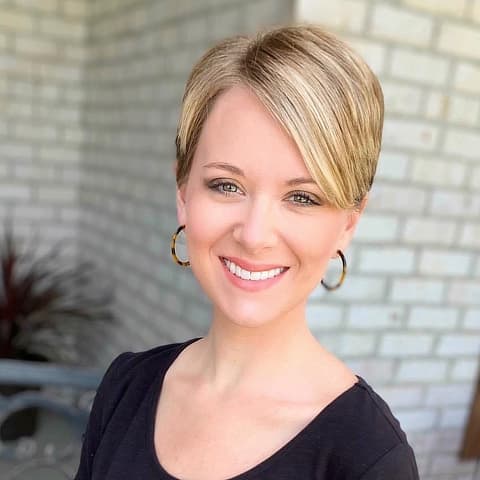
Throughout her 14-year teaching career, Nicole Henderson ’22 observed that most teachers have or had students in their classrooms dealing with home-based trauma. And as these students struggle with burdens that no child should have to bear, their teachers struggle with how to help them.
“As teachers, we’re not trained in this,” Henderson said. “We’re not counselors, and we can’t diagnose anything, so a lot of times, we’re stuck not knowing what to do.”
As a doctoral candidate in Samford University’s Orlean Beeson School of Education, Henderson chose a topic for her dissertation that explored teachers’ roles in helping students manage the traumatic circumstances they may be living with at home. She limited her research to Title I schools in Alabama.
Having taught in Title I schools her entire career, Henderson knew her students often came from households beset with poverty and trauma. While her initial findings confirmed the connections, the statistics were unsettling.
“As I began researching, I found that 48% of students in Alabama have experienced at least one Adverse Childhood Experience (ACE), meaning abuse, neglect, or other trauma,” she said. “It can be physical, sexual, emotional, parents being incarcerated, drug abuse in the house, or something else. Most of those students are in poverty-stricken Title I schools.”
Henderson also chose to limit her research to Pre-K through third grade because the highest number of ACE incidents in the United States happen to children aged 6 and under, and they typically can't self-report.
“They don't know that what's happening to them is abuse, and a lot of times it's up to the teachers of those younger students to discern if there's trauma taking place,” she explained.
But that, said Henderson, leaves teachers with the dilemma of how to detect trauma in a student, what signs to look for, how to report trauma, how to advocate for the student in the classroom and how to teach an abused child.
“The most surprising thing about my research was learning that 100% of my participants did not feel prepared to help these students in the classroom, and 100% of my interview participants did not feel prepared by their teacher preparation programs to help,” she said.
In her interviews, Henderson also asked participants if they felt the counselors and administrators in their schools provided them with enough assistance. Most said that while administrators and counselors try to help, they often don't have time. For instance, counselors in Alabama handle a load of paperwork regarding state testing and therefore, are unable to function enough in the counselor role.
“This brings in the need for mental health counselors,” Henderson said. “I do think the state of Alabama or maybe particular schools are seeing a greater need for those mental health counselors since school counselors are already pulled in too many different directions.”
When all was said and done, Henderson’s research affirmed her first correlation relating a significant percentage of students in Title I schools to poverty and trauma.
“All of my participants had dealt with this, and some of the stories they told would absolutely break your heart,” she said.
When the teachers were asked what would most help them to help their students, the number one response was scenario training. They also suggested bringing in people who had dealt with trauma as students to talk about what had or had not helped them when they were in school.
“I’d love to take this information to State Superintendent Eric Mackey and talk with him about the importance of mental health issues in schools,” Henderson said. “As teachers, we can't stop the trauma from happening, but we can make these students’ lives better. You don’t really know the amount of trauma our students are going through until you talk to the teachers who are dealing with it every single day.”
